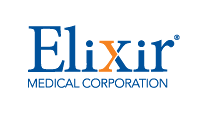Noticias


- Título: Akesys Medical and Elixir Medical Announce First Human Implant of the PRAVA™ Bioresorbable Scaffold for Peripheral Vascular Disease
- Fecha: 20-10-2016
SUNNYVALE, Calif.--(BUSINESS WIRE)--
Akesys Medical, a drug-device company focused on pioneering innovative solutions for peripheral artery disease, has announced their first clinical trial and successful implant of the breakthrough PRAVA™ Sirolimus Eluting Bioresorbable Peripheral Scaffold System for the treatment of blockage in the superficial femoral artery (SFA). The Akesys PRAVA™ scaffold is designed to maintain the large artery in the thigh open and restore blood flow to the leg, then resorb into the body and unlike metallic stents leave no permanent implant behind. The PRAVA™ scaffold leverages bioresorbable technology licensed to Akesys by Elixir Medical Corporation, a leader in developing bioresorbable scaffolds for the coronary arteries, including the DESolve™, DESolve™ Cx, and DESolve™ NXT platforms.
According to the National Institutes of Health, one in every 20 Americans over the age of 50 has peripheral artery disease (PAD), a condition that raises the risk for heart attack, stroke, limb amputation and death. More than 10 million people worldwide are estimated to have PAD affecting the SFA. In order to combat this critical clinical need, Akesys Medical has partnered with Elixir Medical to conduct the DESappear Study. Drs. Marc Bosiers, Vascular Surgeon, AZ St Blasius Hospital, Dendermonde, Belgium, and Dierk Scheinert, Head of Department of Interventional Angiology, University Hospital of Leipzig, Germany, will serve as Principal Coordinating Investigators for the study.
The DESappear Study is a prospective, single-arm, multicenter trial of the PRAVA™scaffold in patients presenting with symptomatic atherosclerosis in the SFA. The primary safety endpoint of the trial is a composite of freedom from perioperative death through 30 days and freedom from major adverse limb events (defined as the occurrence of major amputation, thrombectomy or thrombolysis, or major open surgical revascularization) through 6-month follow-up. The primary effectiveness endpoint is primary patency defined as freedom from restenosis (>50% diameter reduction defined by Duplex Ultrasound (DUS)) or clinically-driven TLR (Target Lesion Revascularization) through 6 months. Clinical and DUS follow-up will be held at 30 days, and 6, 12, 24 and 36 months. Akesys Medical expects to enroll up to 60 patients at 12 sites in Europe and New Zealand.
“The DESappear Study is an important milestone in the pursuit of bringing innovative therapies with state-of-the-art bioresorbable technologies to treat a vulnerable population of patients with PAD,” said Dr. Bosiers. “I am excited to be working with Akesys Medical with the goal to bring this vital product to the clinic.”
DESappear Investigator Dr. Andrew Holden, Director of Interventional Services at Auckland City Hospital and Associate Professor of Radiology at Auckland University School of Medicine, implanted the first PRAVA™ in a 66 year-old patient with 45 mm of disease in the mid-SFA and 80% blockage.
“The diabetic patient with short distance leg claudication demonstrated zero percent residual stenosis following the procedure with the PRAVA scaffold and has recovered well,” said Dr. Holden. “The PRAVA scaffold’s easy deliverability for treatment and its excellent structural support to the vessel without leaving behind a permanent metallic implant has the potential to transform treatment options for physicians like me to greatly enhance patient outcomes.”
The PRAVA™ Sirolimus Eluting Bioresorbable Peripheral Scaffold System combines the distinctive attributes of excellent deliverability with robust vessel support, controlled drug release over six months and scaffold degradation within one year. These features of the PRAVA scaffold have been designed to address the unique challenges of the SFA where the high degree of mechanical force and deformation can pose challenges for permanent metallic implants including stent fracture, and irritation of the vessel wall potentially causing restenosis. In addition, the extended drug release of the PRAVA scaffold has the potential to sustain the initial clinical outcomes over the long term as compared to the suboptimal shorter duration drug-eluting balloons, and provide better vessel support post procedure.
“Akesys is proud to have developed this important new therapy option for physicians to treat their patients suffering from debilitating peripheral disease,” said Motasim Sirhan, CEO of both Akesys Medical and Elixir Medical. “We are confident that the PRAVA scaffold system will meet the challenges of the SFA vasculature and demonstrate long-term, sustained results to become a valuable therapy in the treatment of SFA disease.”
- Fuente: endovascular.es





